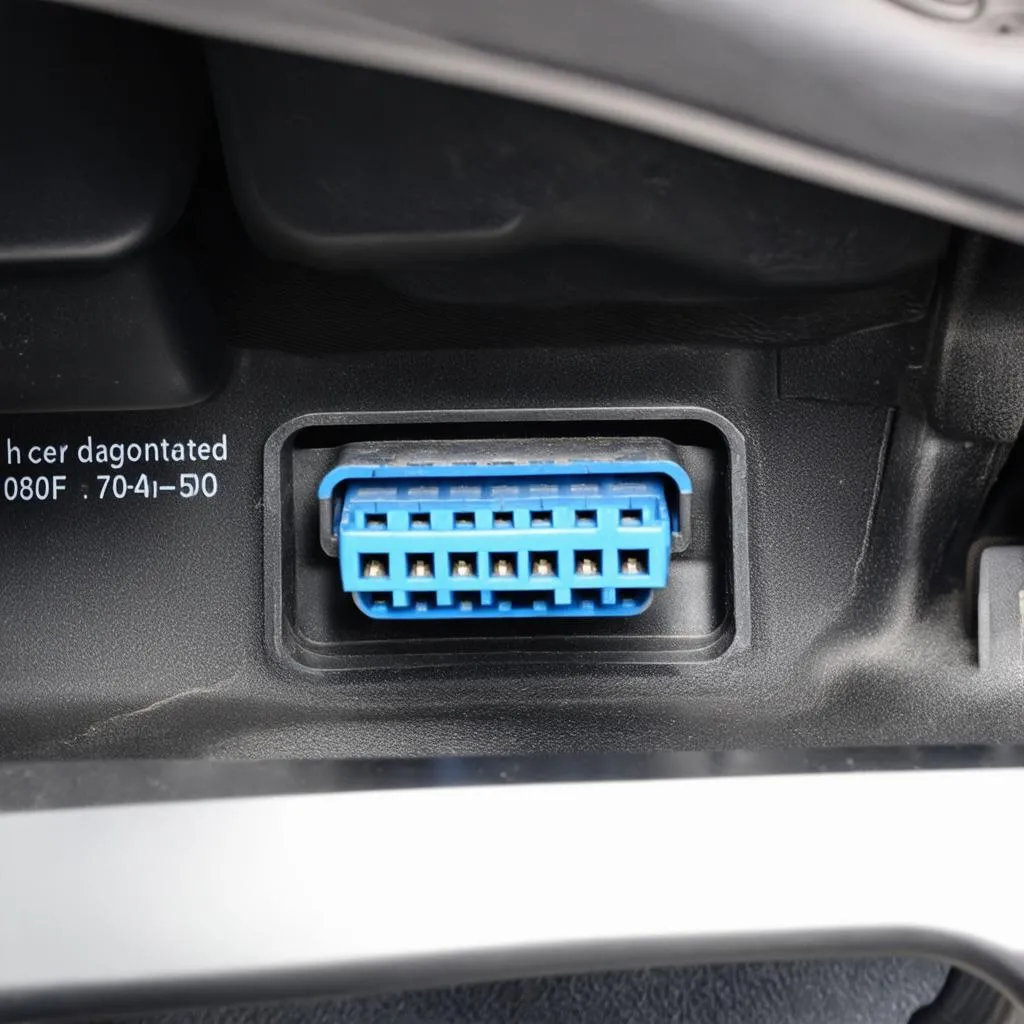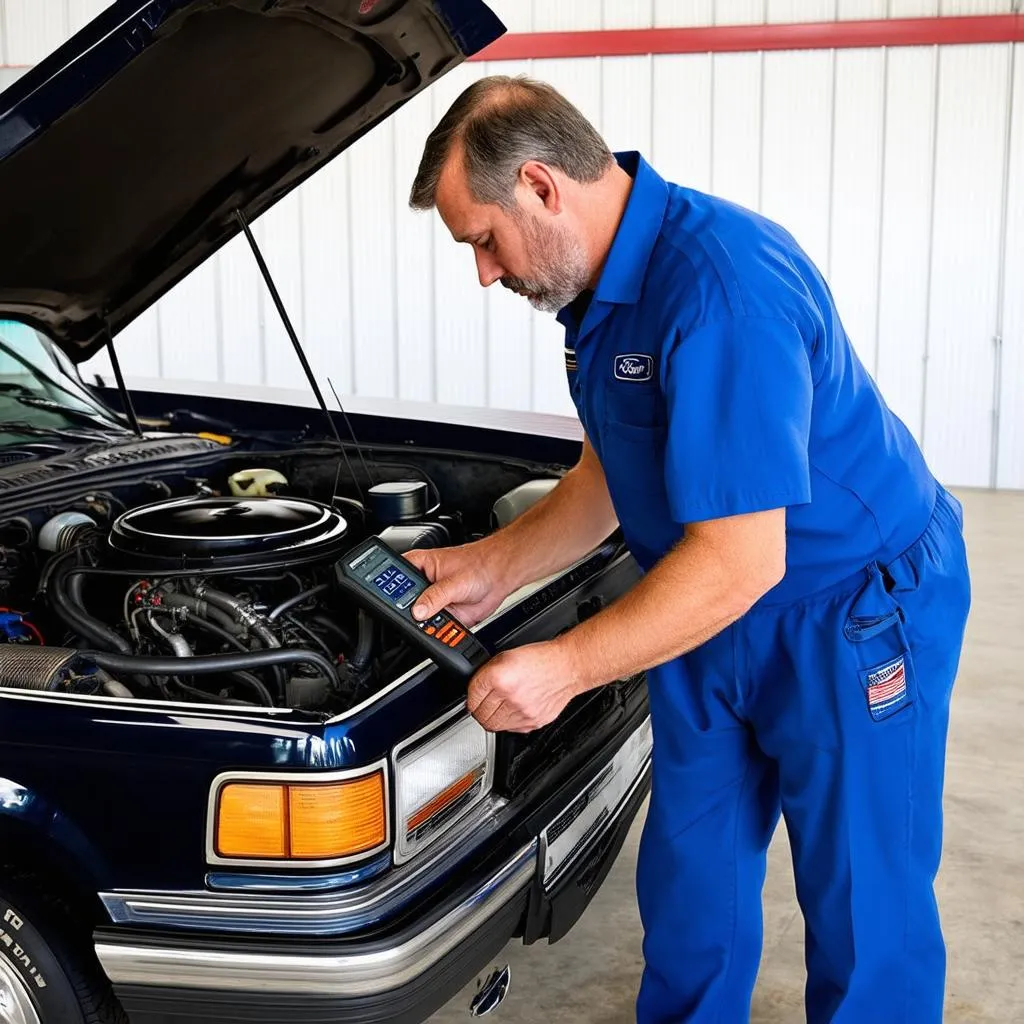Imagine this: You’re cruising down the highway in your trusty 1991 F350, wind in your hair, a country tune on the radio. Suddenly, the “Check Engine” light throws a wrench in your peaceful drive. Now, for many, that little light triggers a wave of confusion and worry. What’s wrong? How serious is it? This, my friends, is where understanding your truck’s language becomes crucial – enter the world of OBD codes.
What Does a 1991 F350 OBD Code Tell You?
Just like your F350 speaks to you through its gauges and warning lights, its internal computer system uses On-Board Diagnostic (OBD) codes to communicate specific issues. In simpler terms, it’s your truck’s way of saying, “Hey, something’s not quite right here.”
Now, a 1991 F350, a true workhorse of its time, utilizes OBD-I, the first generation of this diagnostic system. While not as sophisticated as the OBD-II systems in later vehicles, it still provides valuable clues. When the “Check Engine” light illuminates, it means your truck’s computer has stored a trouble code, pinpointing the potential source of the problem. This could range from something as simple as a loose gas cap to more complex issues within the engine or emission control systems.
Decoding the 1991 F350 OBD Codes
Unlike the standardized OBD-II codes found in later vehicles, deciphering 1991 F350 codes often feels like a treasure hunt. Unfortunately, there’s no universal list. The codes themselves are often manufacturer-specific, meaning what signifies one thing for a Ford might be entirely different for a Chevy.
Where to Find the Codes
Typically, 1991 F350s don’t have a fancy digital display for codes. Instead, they rely on a simpler method:
- Locate the Diagnostic Connector: This is usually found under the dashboard, on the driver’s side.
- Identify the STI (Self-Test Input) Terminal: It’s often a single wire or pin marked “STI.”
- Ground the STI Terminal: Use a jumper wire to briefly connect the STI terminal to a good ground.
- Observe the “Check Engine” Light: It will flash in a specific sequence, indicating the stored code(s).
Understanding the Code Flashes
Here’s where the real detective work begins. The “Check Engine” light will flash a series of long and short blinks, representing numerical codes. For instance:
- One long flash followed by two short flashes might indicate code “12.”
You’ll need a code guide specific to your 1991 F350 to decipher these flashes.
 OBD Connector
OBD Connector
Common 1991 F350 OBD Codes and Their Meanings
While a comprehensive list is elusive, here are a few common codes you might encounter:
- Code 12: Indicates the diagnostic system is working correctly (or there are no codes stored).
- Code 21: Often related to the oxygen sensor (O2 sensor) circuit, signaling a potential issue with the engine’s air/fuel mixture.
- Code 33: Points towards a problem with the EGR (Exhaust Gas Recirculation) system, which helps control emissions.
- Code 56: This code often indicates an issue with the engine coolant temperature sensor, which could affect engine performance.
What to Do When Your 1991 F350 Throws a Code
- Don’t Panic: While a flashing “Check Engine” light can be unnerving, it doesn’t always mean a catastrophic failure.
- Consult a Repair Manual or Resource: Find a guide specific to your truck’s year and engine type.
- Consider a Professional Mechanic: If you’re not comfortable tackling the diagnosis or repair yourself, a trusted mechanic specializing in older vehicles can help.
 Car Diagnostic
Car Diagnostic
Frequently Asked Questions about 1991 F350 OBD Codes
- Can I drive my truck with the “Check Engine” light on? While you might be able to drive for a short distance, it’s crucial to address the underlying issue as soon as possible to prevent potential damage.
- Where can I get a reliable code reader for my 1991 F350? Because of the OBD-I system, standard code readers won’t work. You’ll need a specialized tool designed for this generation of vehicles.
Maintaining Your 1991 F350 for Optimal Performance
Just like any classic machine, your F350 thrives on regular maintenance. Here are some tips:
- Regular Oil Changes: Follow the recommended oil change intervals using high-quality oil and filters.
- Check Fluids Regularly: Keep an eye on engine coolant, transmission fluid, brake fluid, and power steering fluid levels.
- Inspect Belts and Hoses: Look for signs of wear and tear, replacing as needed.
Conclusion
Navigating the world of 1991 F350 OBD codes can feel daunting, but with a little patience and the right resources, you can keep your truck running smoothly for years to come. Remember, early detection is key to preventing minor issues from becoming major headaches.
Need help diagnosing or fixing your 1991 F350? Don’t hesitate to reach out to our team of automotive experts via WhatsApp at +84767531508. We’re here to help you get back on the road and enjoy that classic F350 driving experience.
Explore more about classic truck maintenance and repair on techcarusa.com!